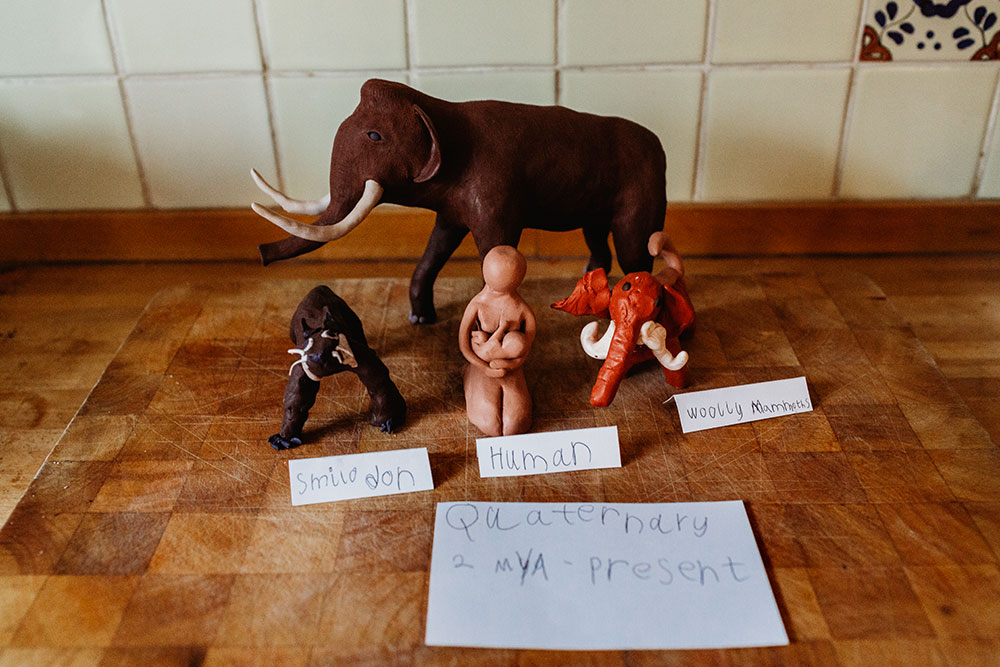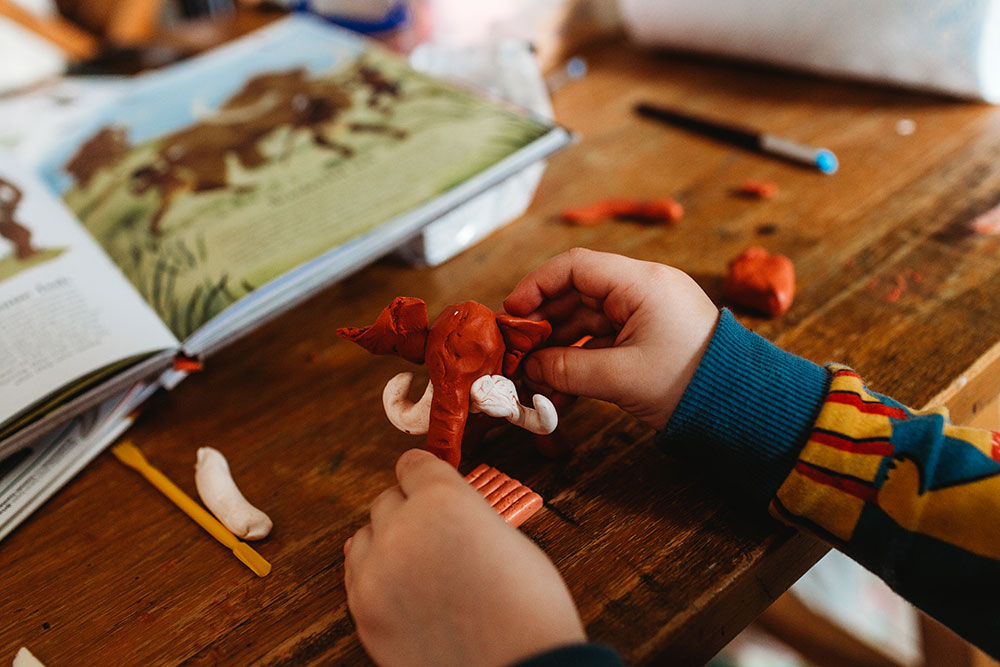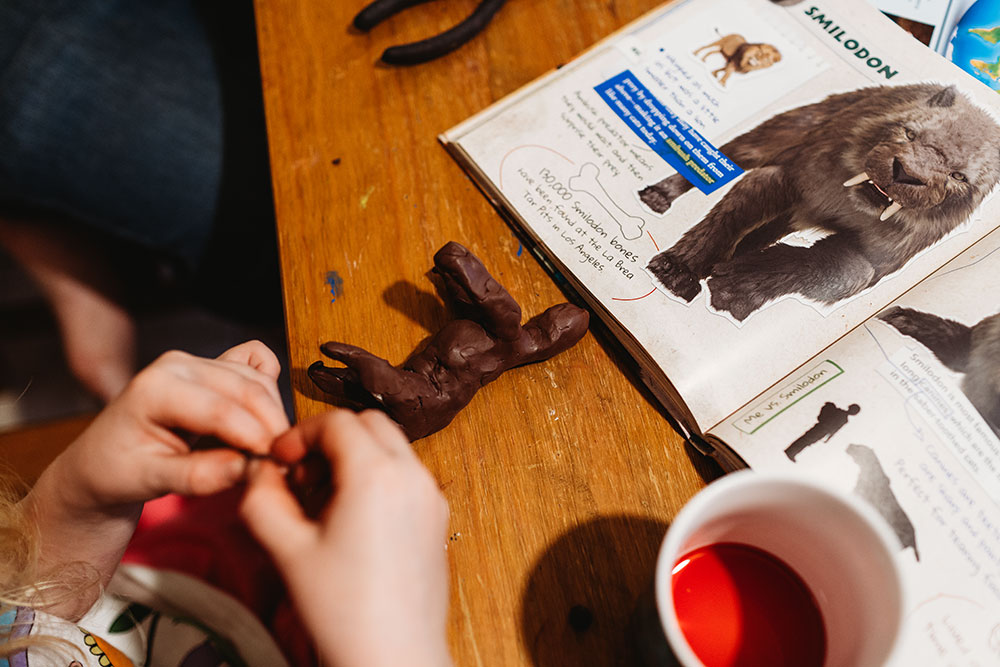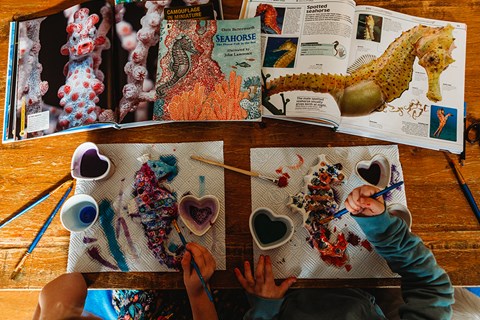Our Timeline of Life on Earth
Learning about fossils and rocks really triggered Nixie's curiosity and made her want to learn more about all of the creatures that have come and gone. So we embarked on a journey that began 4.6 billion years ago to learn about life on our planet and how it evolved. As a way to do something really special with this we decided to begin a family art project of making our favourite creatures from each time period using polymer clay. It took us a very long time to complete (we had begun this project at the end of April) and have finally just finished it now at the very end of December but it has been so worth it and I'm super proud of us for seeing it through!
Precambrian 4.6bya-541mya
the Precambrian is what we call the first period of life on Earth. Most lifeforms in the Precambrian were soft-bodies creatures living in the ocean, usually attached to the seabed. Toward the end of this period some lifeforms began to emerge with hard parts or shells.
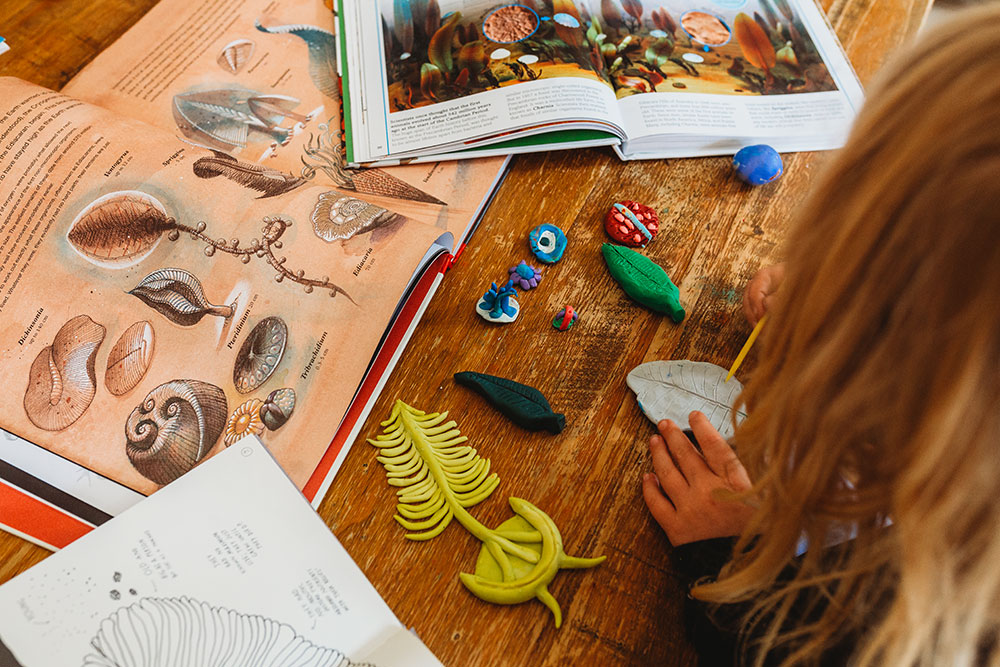
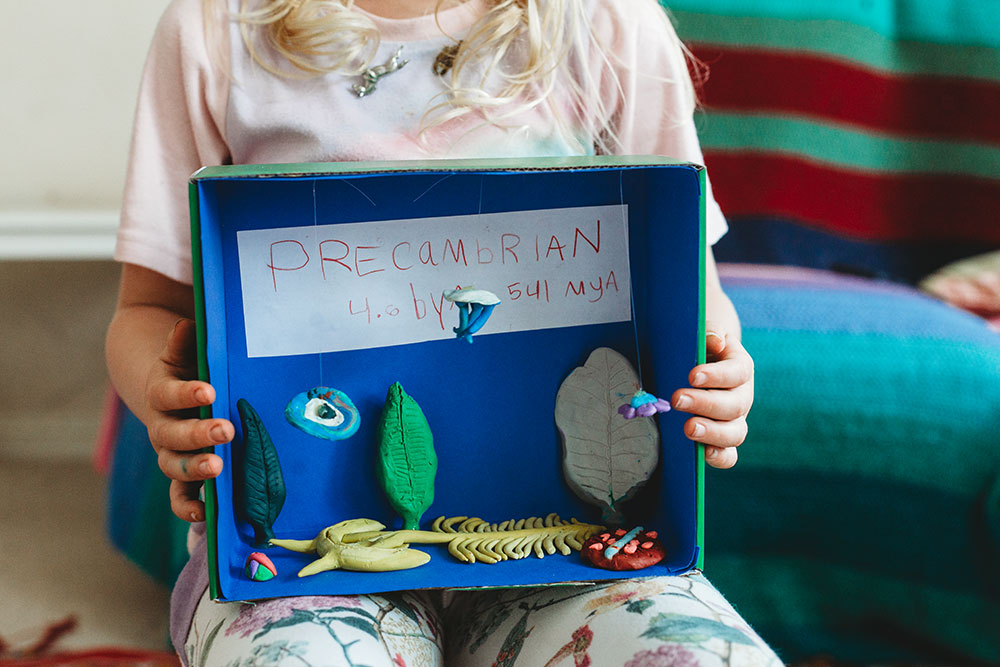
Cambrian & Ordovician 541mya- 444mya
During the Cambrian, the first chordates (animals with backbones) emerged, which meant a lot more wriggling, swimming, and moving was happening. ) The Ordovician Period came next, and lasted from 485 million years ago to about 444 million years ago. Because Earth's climate had become warm and humid, new life flourished, especially in the water. Giant mollusks, predatory arthropods, and fish roamed the seas.
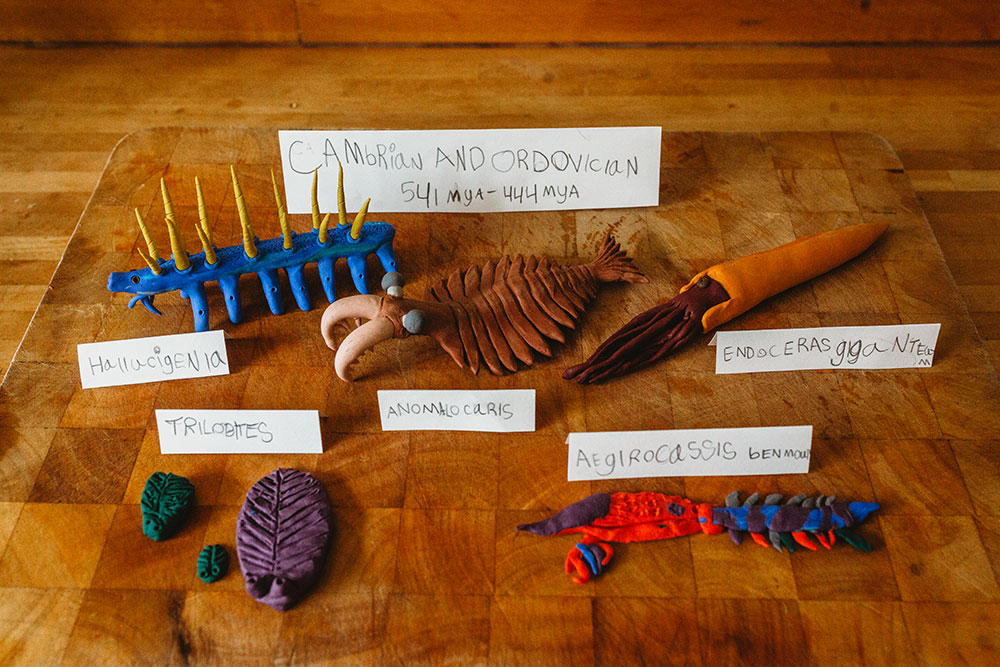
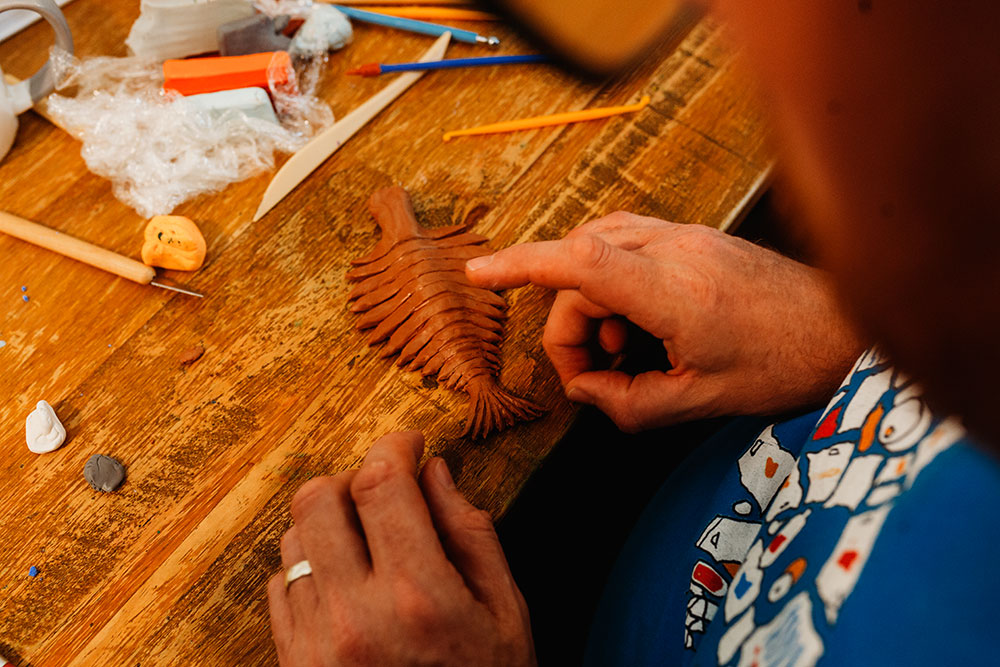
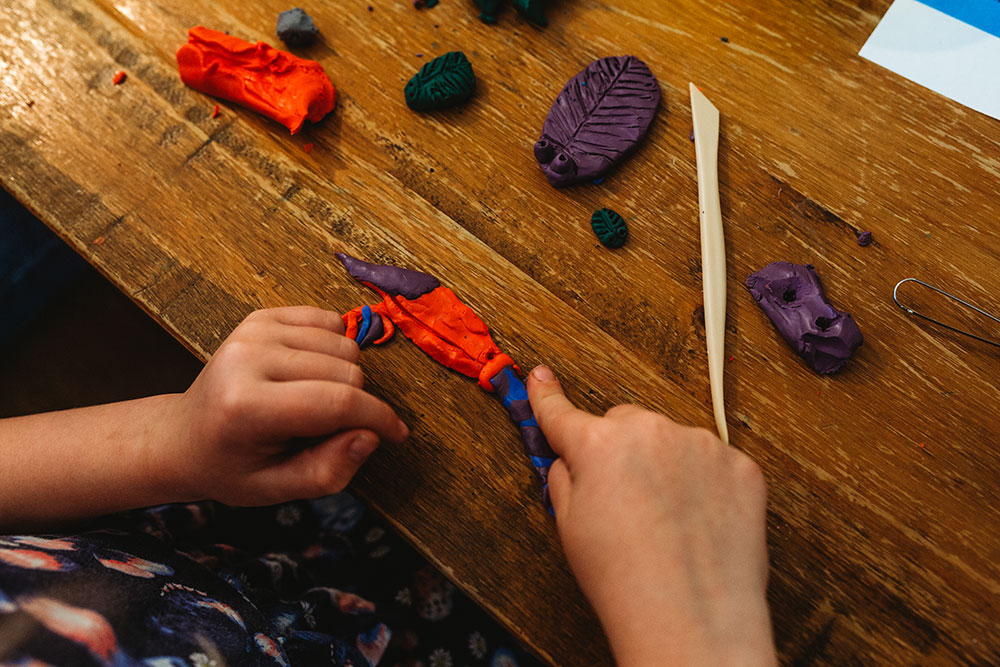
Silurian & Devonian 444mya- 359mya
The Silurian Period lasted from 444 million years ago to around 419 million years ago. It brought warmer temperatures and rising sea levels. The first primitive plants began to flourish across the coastal lowlands and created wetlands. Coral reefs began to form, and the first jawed fish made their appearance. The Devonian Period lasted from 419 million years ago to around 359 million years ago. It is often referred to as "the age of fish" because so many new species of fish developed during this period. True bony fish species, cartilaginous fish species (ancestors to the sharks and rays we know today), and placoderms--armoured predators with blade-like jaws--dominated the seas.
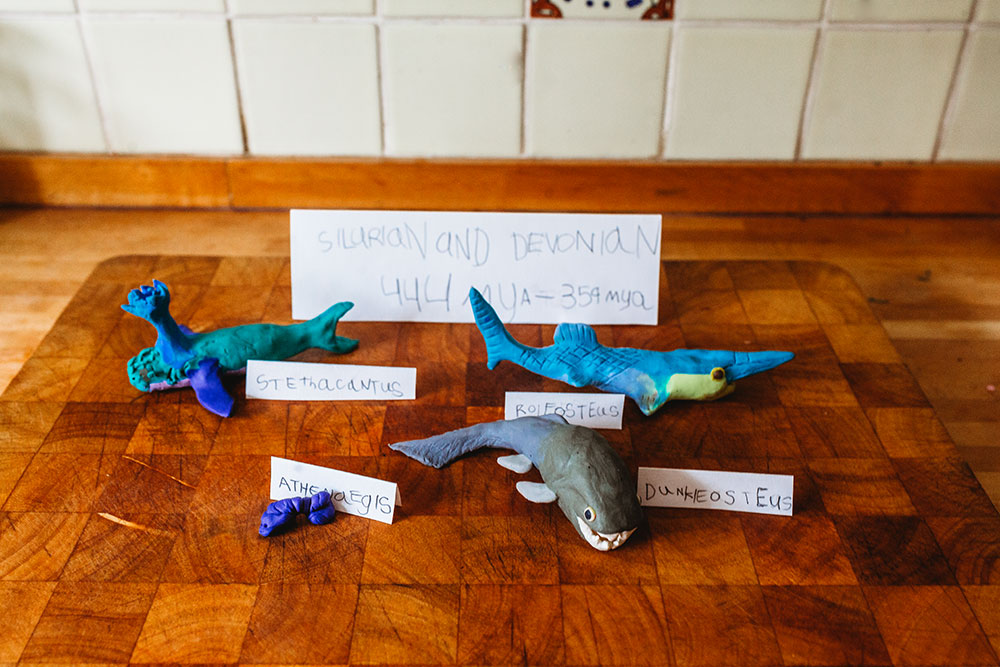
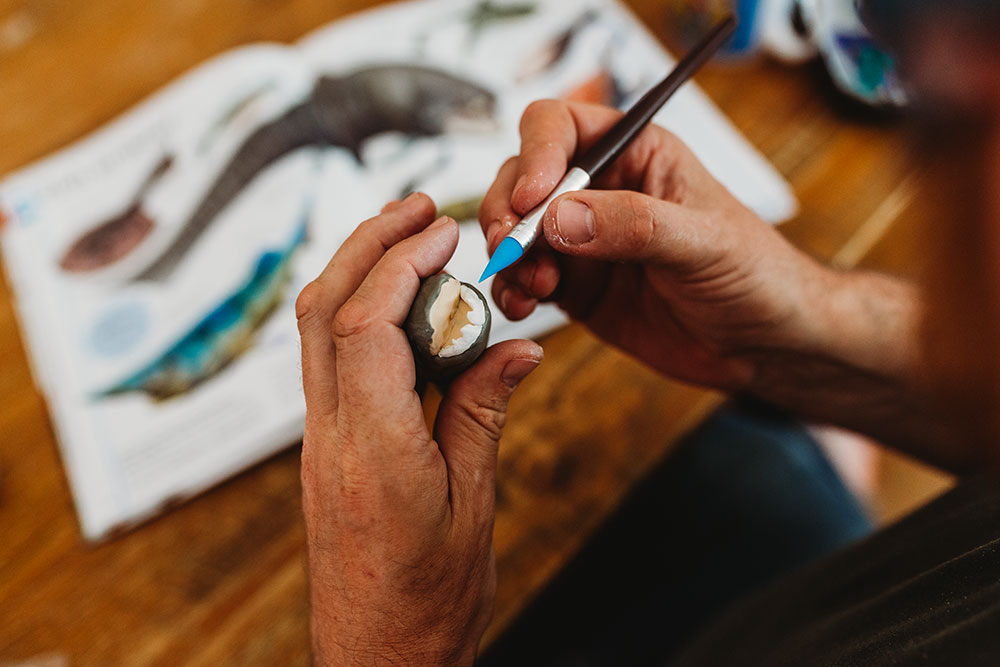
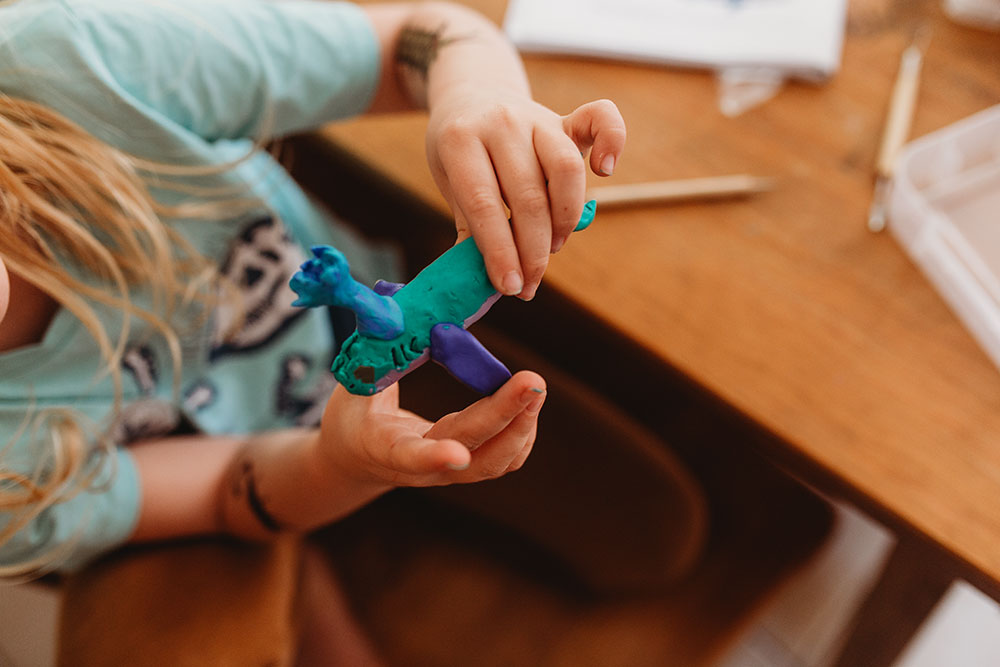
Carboniferous & Permian 359mya- 252mya
The Carboniferous Period lasted from 359 million years ago to about 299 million years ago. During this period, the climate had become tropical and humid. Because of the evolution of roots, trees were able to grow very large beginning in this period. These giant trees created dense swamps and produced an enormous amount of oxygen. Because of the oxygen-rich atmosphere, arthropods began to grow to colossal proportions. During the Carboniferous, the first flying insects evolved. These were the first flying animals on the planet. Tetrapod's began to spend significant time on land during the Carboniferous, evolving into the very first amphibians and, toward the end of this period, the first reptiles.
The Permian Period lasted from 299 million years ago to around 252 million years ago. Toward the end of the Carboniferous, the climate became cooler and drier. The swamps and rainforests began to decrease. This change in climate is believed to have been caused by the shifting of the continents on the Earth's surface into one large continent called Pangea. Two groups of tetrapod's emerged during the late Carboniferous and soon dominated the Permian Period. They were the sauropsids (believed to be the ancestor of reptiles and birds) and the synapsids (believed to be the ancestor of modern mammals.) The Permian Period ended with what was likely the worst mass extinction event in history,
killing 90% or more of all ocean species and 2/3 of all tetrapods on Earth.
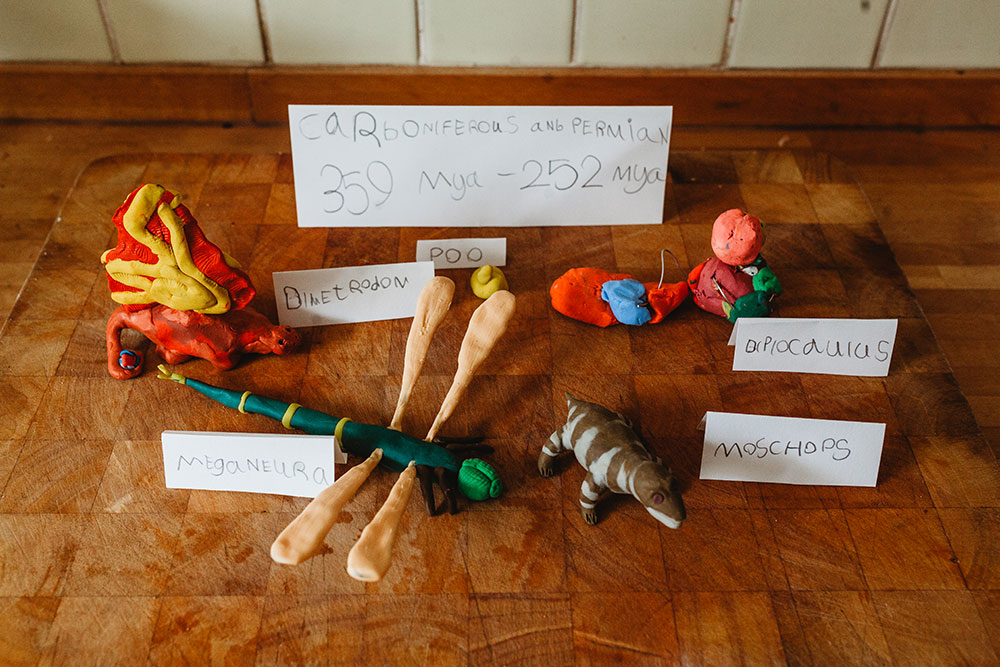


Triassic 252mya- 201mya
The Triassic Period began in the aftermath of a devastating mass extinction event at the end of the Permian Period. During the early Triassic, the survivors of this event began to evolve into the very first dinosaurs, flying reptiles called pterosaurs, and marine reptiles. The dinosaurs were quite small compared to what you probably think of as a dinosaur. In addition to dinosaurs.
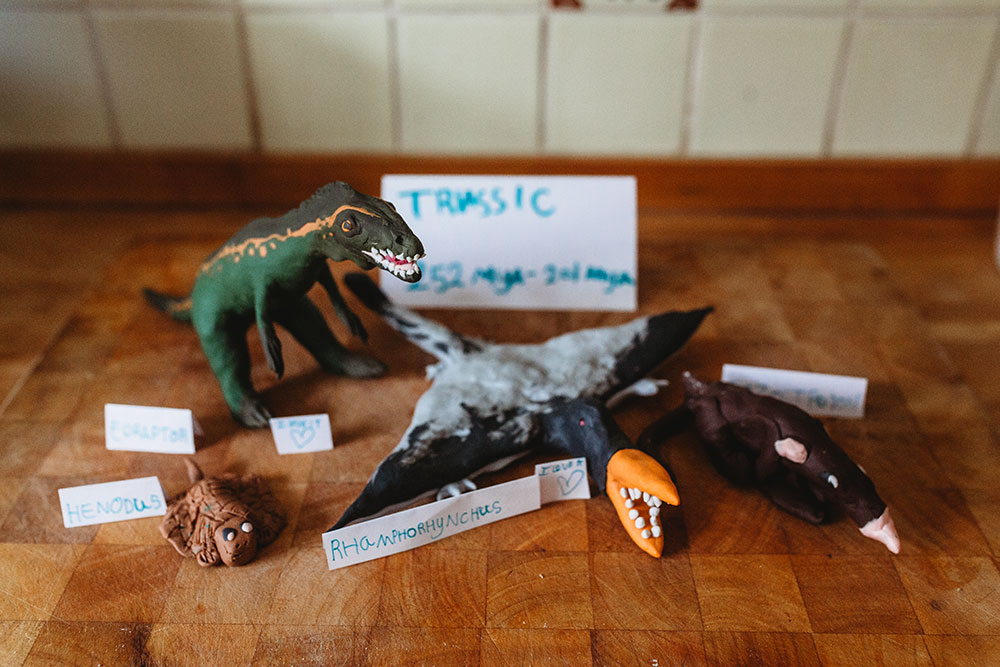

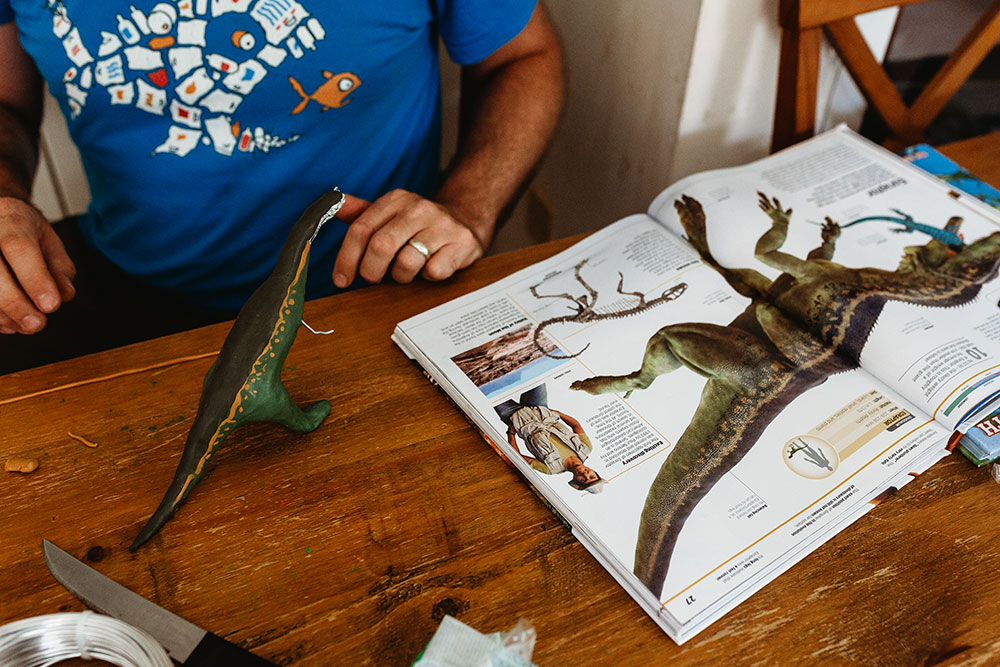
Jurassic 201mya- 145mya
During this period, the supercontinent Pangea split into two pieces, which shifted the climate yet again. Now more landmass was closer to water, which meant more lush vegetation and a milder, wetter climate. The Jurassic world was filled with all kinds of animal life: insects and other arthropods, marine reptiles, pterosaurs, marine invertebrates, small mammals, and dinosaurs. The dinosaurs took center stage during this period after making a relatively minor appearance during the Triassic.
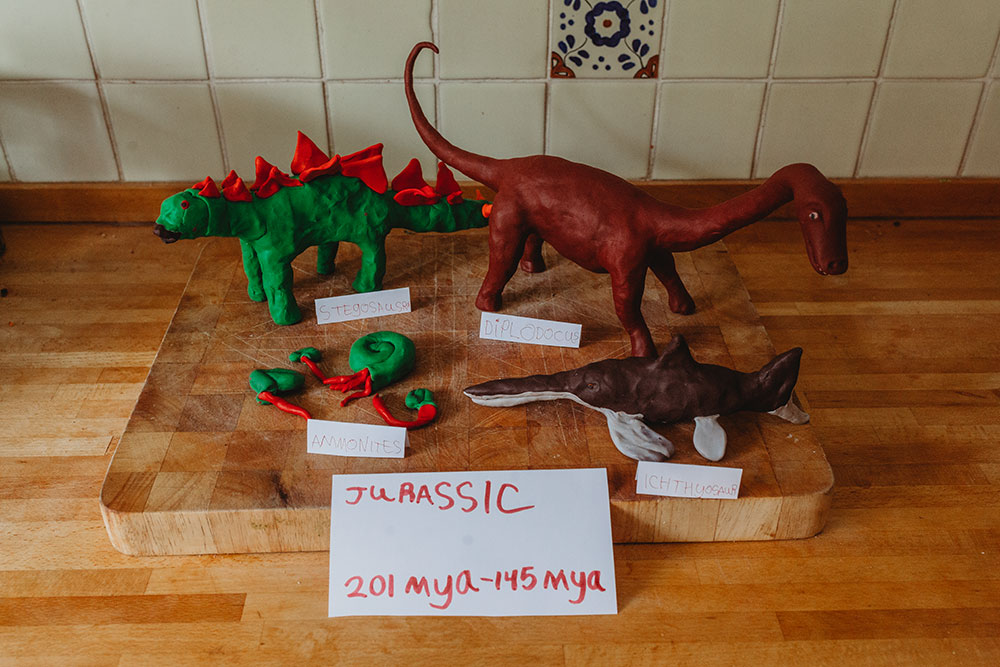

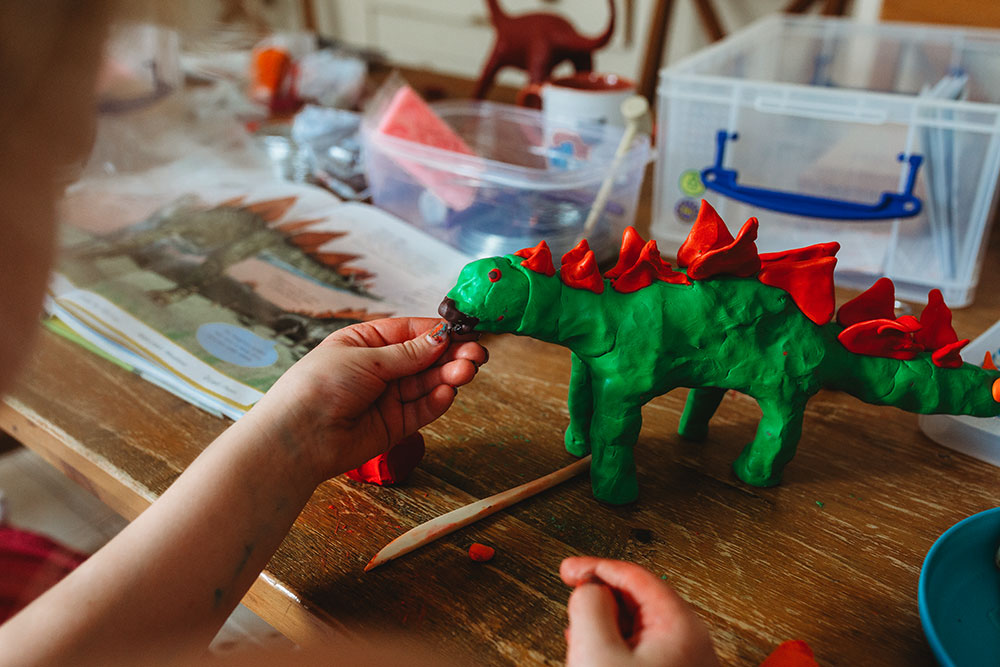
Cretaceous 145mya- 66mya
During this time, the continents split further apart, and life began to evolve differently on each segment. Because of this, the Cretaceous hosted a huge diversity of species. This was an exciting period, bursting with new and diverse species of animal life. In addition to the evolution of a huge variety of dinosaur species, more mammals appeared, more bird species began to evolve (including the first beaked birds), and new invertebrate species (especially insects) began to flourish. This explosion of new lifeforms was due to several factors. The separation of the continents was one factor. The first appearance of flowering plants was another.
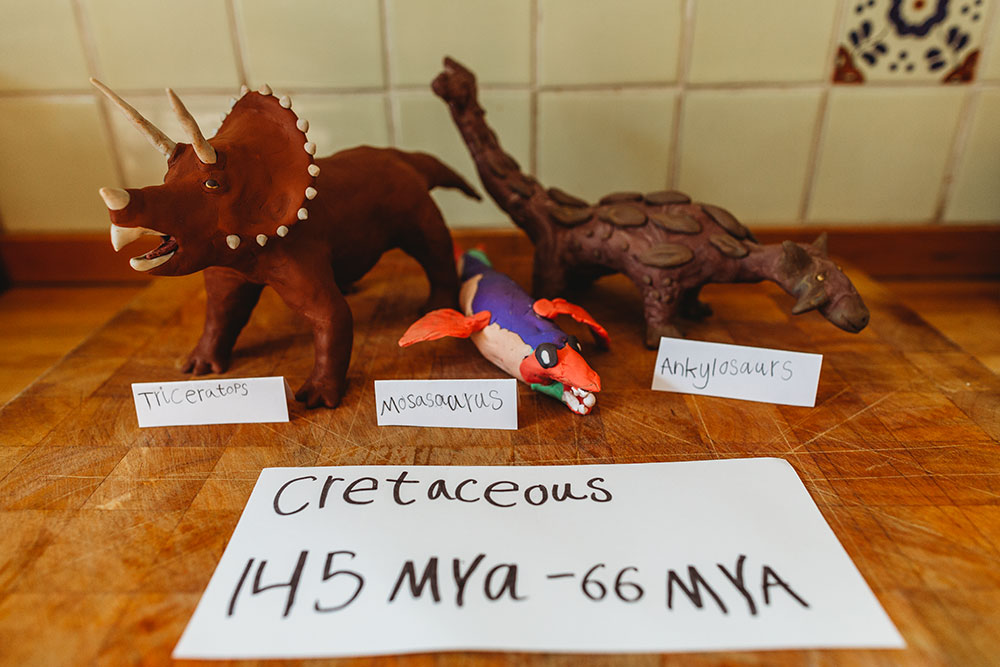
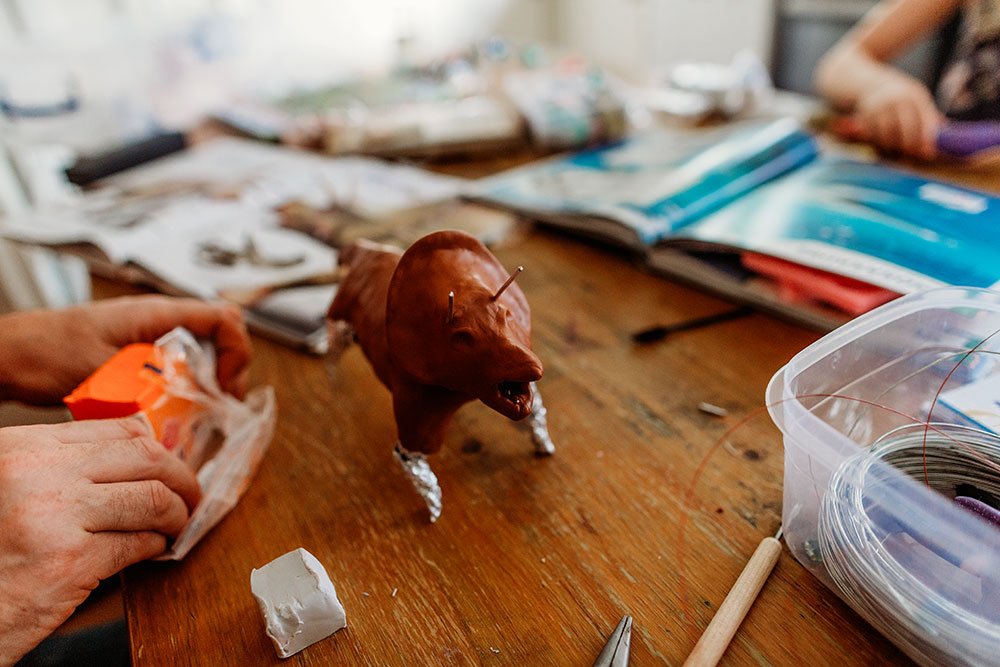
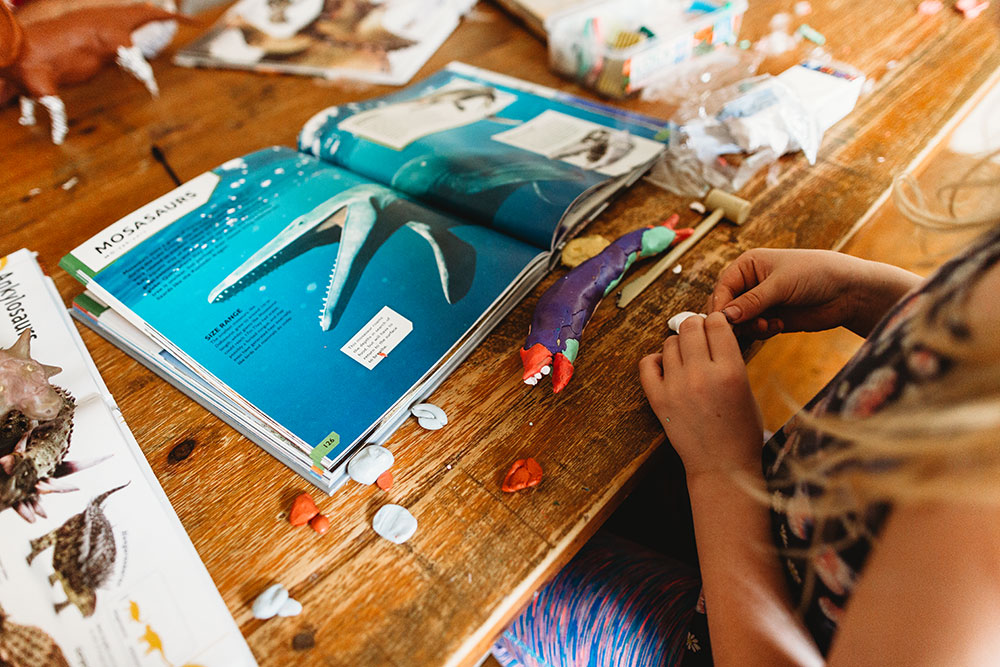
Paleogene & Neogene 66mya- 2mya
The Paleogene Period lasted from 66 million years ago to around 23 million years ago. The dinosaurs, with the exception of birds, had been wiped out in the mass extinction event at the end of the Mesozoic, which made room for a new group to take over--the mammals. ) In addition to bigger, better hunters that evolved from the Mesozoic mammals, two new
groups of mammals appeared during the Paleogene: the odd-toed ungulates and the even-toed ungulates. Both groups consisted of hoofed, grazing herbivores that roamed the vast grasslands that appeared during the Paleogene.
The Neogene Period lasted from 23 million years ago to around 2 million years ago. It began with several ice ages. During the Neogene, Other mammal species began to evolve and thrive, including the giant mammals called megafauna along with giant snakes called Titanoboas.
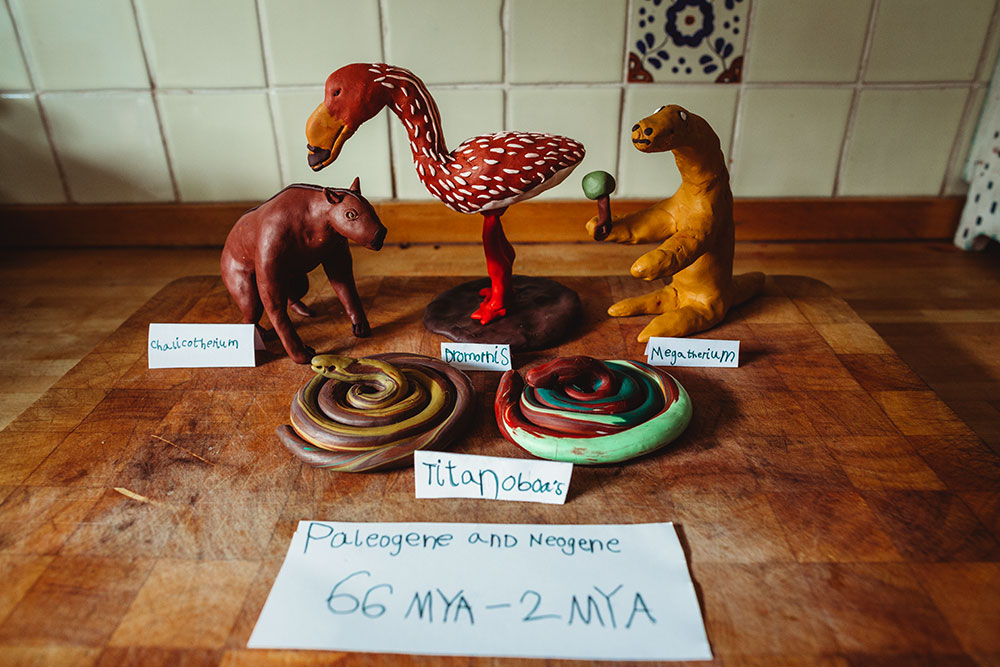

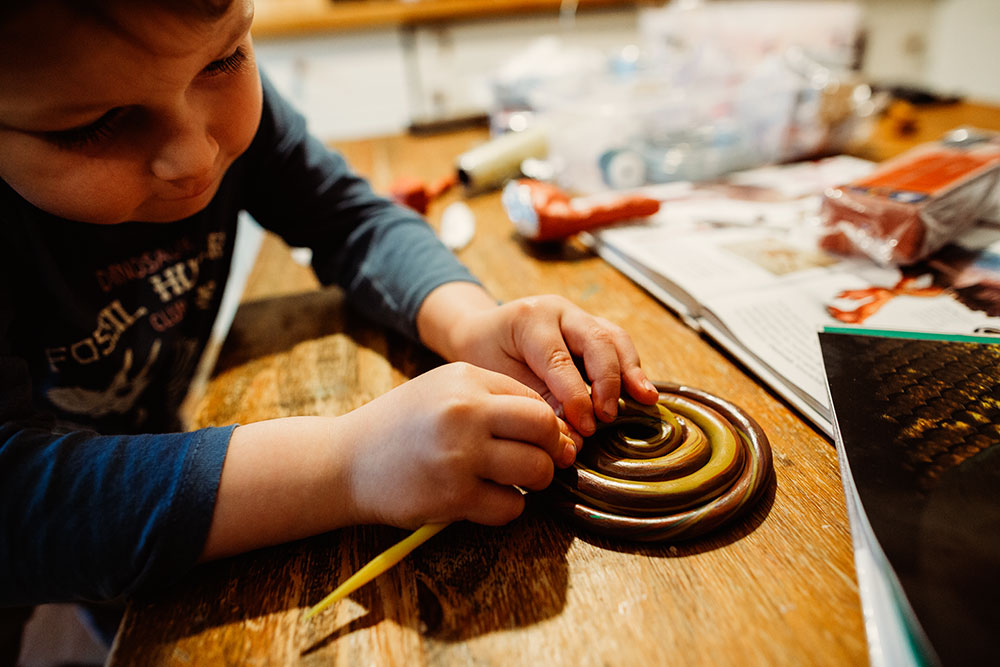
Quaternary11,700mya- present
we did skip a couple of million years there but the animals didn't change too much so we decided to jump to the quaternary period which is our current period.
